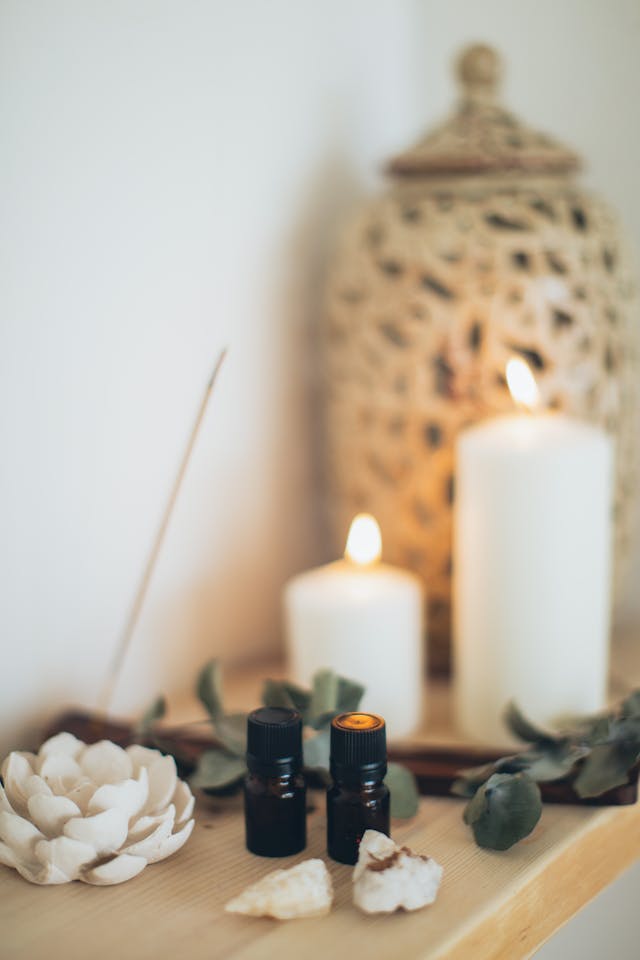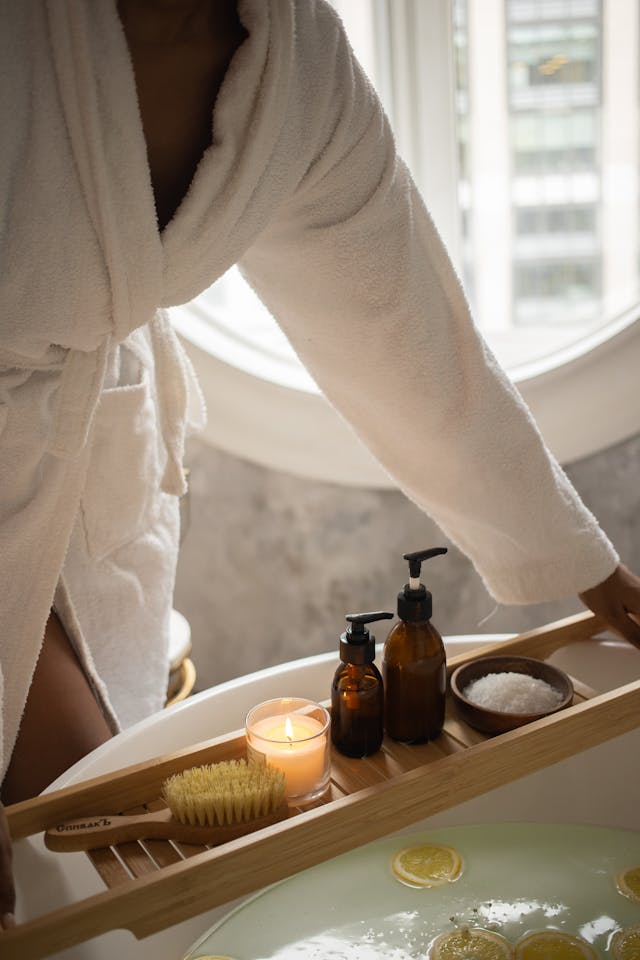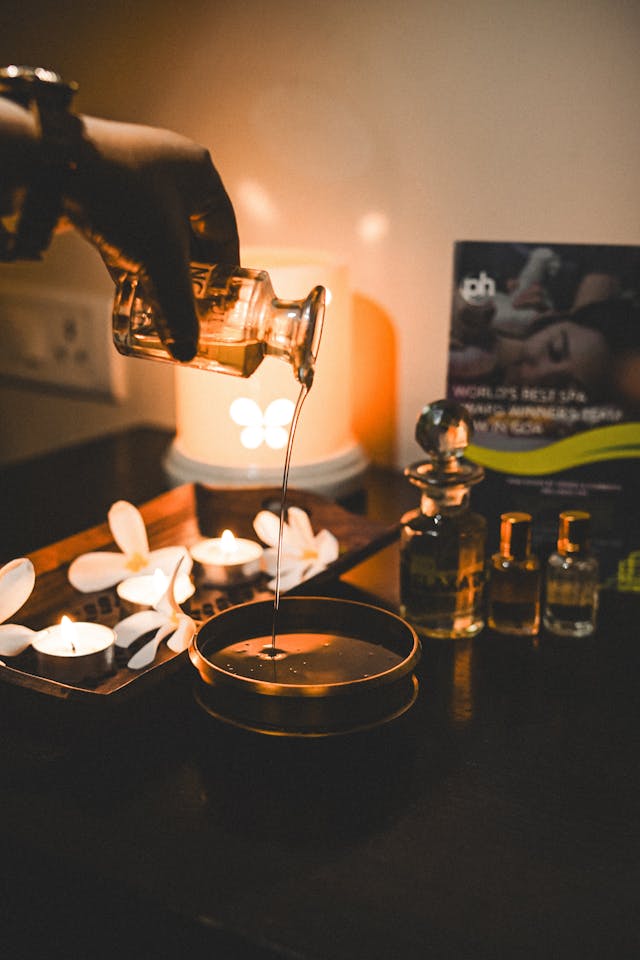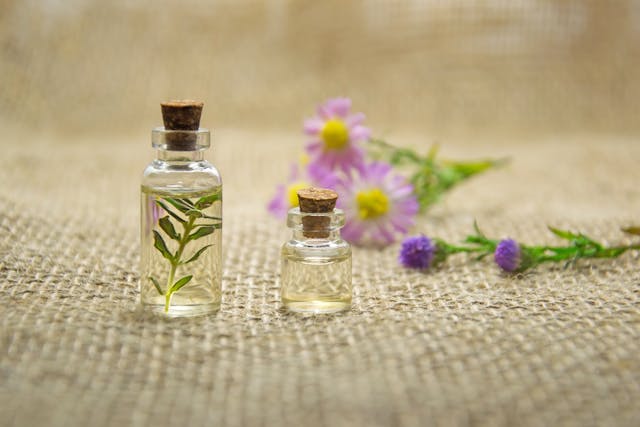Introduction
Aromatherapy, the practice of using essential oils extracted from plants for therapeutic purposes, is not just a modern wellness trend; it is a holistic healing art with deep historical roots and profound physical and mental health benefits. The journey of aromatherapy from ancient civilizations to contemporary times reveals a timeless appreciation for the natural scents and their healing properties. This blog explores the origins of aromatherapy, its historical significance, and the scientific evidence supporting its benefits for physical and mental well-being.

A Historical Perspective
Aromatherapy’s origins can be traced back to the earliest civilizations, where plants and their extracts were revered for their healing properties. The ancient Egyptians, known for their advanced knowledge of medicine and perfumery, were among the first to harness the power of aromatic plants. They used essential oils for embalming, medicinal purposes, and religious rituals. The Ebers Papyrus, an ancient Egyptian medical text dating back to 1550 BCE, documents the use of aromatic herbs and oils for treating various ailments.
In ancient Greece, Hippocrates, often referred to as the father of medicine, advocated the use of aromatic baths and massages for their therapeutic effects. The Greeks also recognized the antiseptic properties of certain essential oils, using them to treat wounds and prevent infections. Similarly, the Romans adopted and expanded upon Greek knowledge, incorporating essential oils into their daily lives for bathing, massage, and even cooking.
The use of aromatherapy continued to flourish in ancient India and China. Ayurvedic medicine, one of the world’s oldest holistic healing systems, integrated essential oils into treatments to balance the mind, body, and spirit. Chinese medicine, with its emphasis on harmony and balance, also utilized aromatic herbs and oils for their healing properties. These ancient practices laid the foundation for modern aromatherapy, highlighting the enduring connection between humans and the natural world.

Physical Health Benefits
The physical health benefits of aromatherapy are well-documented, with essential oils offering a natural and effective way to support the body’s healing processes. Lavender, one of the most popular essential oils, is renowned for its calming and soothing properties. Studies have shown that lavender oil can reduce anxiety and stress, improve sleep quality, and alleviate pain. In one study, patients undergoing surgery who inhaled lavender oil experienced significantly reduced anxiety compared to those who did not .
Peppermint oil is another versatile essential oil with numerous health benefits. Its cooling and invigorating properties make it an effective remedy for headaches and migraines. A study published in the International Journal of Clinical Practice found that applying peppermint oil to the forehead and temples provided significant pain relief for migraine sufferers . Additionally, peppermint oil can aid digestion, relieve muscle pain, and improve respiratory function.
Tea tree oil, derived from the leaves of the Melaleuca alternifolia tree, is well-known for its antimicrobial and anti-inflammatory properties. It has been used to treat various skin conditions, including acne, eczema, and fungal infections. Research has shown that tea tree oil is effective against a range of bacteria, viruses, and fungi, making it a valuable natural remedy for infections .
Eucalyptus oil, extracted from the leaves of eucalyptus trees, is widely used for its respiratory benefits. Inhaling eucalyptus oil can help clear nasal congestion, reduce inflammation, and improve breathing. It is commonly used in steam inhalation and chest rubs to relieve symptoms of colds, flu, and sinusitis. The anti-inflammatory and analgesic properties of eucalyptus oil also make it useful for treating muscle and joint pain .
Mental Health Benefits
Beyond its physical health benefits, aromatherapy plays a significant role in promoting mental and emotional well-being. The olfactory system, responsible for our sense of smell, is closely linked to the brain’s limbic system, which governs emotions, memories, and behavior. This connection explains why certain scents can evoke powerful emotional responses and influence our mood.
Essential oils like lavender, chamomile, and bergamot are known for their calming and relaxing effects. Aromatherapy with these oils can reduce stress, anxiety, and symptoms of depression. A study published in the Journal of Alternative and Complementary Medicine found that participants who received aromatherapy with bergamot oil experienced significant reductions in anxiety and improved mood compared to those who received a placebo . Similarly, chamomile oil has been shown to alleviate symptoms of generalized anxiety disorder and improve sleep quality .
In addition to calming effects, some essential oils can enhance cognitive function and mental clarity. Rosemary oil, for example, has been shown to improve memory and concentration. A study conducted by Northumbria University found that participants who were exposed to rosemary oil performed better on cognitive tasks and reported higher levels of alertness . The stimulating properties of rosemary oil make it a popular choice for students and professionals seeking to boost their mental performance.
Essential oils can also provide emotional support during times of grief and loss. Frankincense, often referred to as the “king of oils,” has been used for centuries in religious and spiritual ceremonies to promote feelings of peace and transcendence. Its grounding and comforting aroma can help individuals navigate the emotional challenges of bereavement and find solace in moments of distress .

Scientific Evidence and Modern Applications
The benefits of aromatherapy are supported by a growing body of scientific research. Advances in technology and analytical methods have allowed scientists to better understand the chemical composition of essential oils and their mechanisms of action. For example, studies using gas chromatography-mass spectrometry (GC-MS) have identified the active compounds in essential oils that contribute to their therapeutic effects.
One area of research that has garnered significant attention is the impact of aromatherapy on stress and anxiety. Chronic stress and anxiety are pervasive issues in modern society, affecting millions of people worldwide. Aromatherapy offers a natural and accessible way to manage these conditions. A meta-analysis of 12 studies published in the journal Phytotherapy Research concluded that aromatherapy significantly reduces anxiety levels in various populations, including patients undergoing medical procedures, individuals with chronic illnesses, and healthy adults .
The use of aromatherapy in clinical settings is also on the rise. Hospitals and healthcare facilities are incorporating essential oils into patient care to enhance comfort and well-being. For example, some hospitals use lavender and chamomile oils to create a calming environment in waiting areas and patient rooms. Aromatherapy massage, which combines the therapeutic touch of massage with the benefits of essential oils, is offered in many integrative medicine programs to reduce pain, improve sleep, and promote relaxation .
In addition to clinical applications, aromatherapy is gaining popularity in the workplace as a tool for enhancing productivity and well-being. Many companies are incorporating essential oil diffusers into office spaces to improve air quality and create a pleasant working environment. Scents like peppermint, lemon, and rosemary are used to boost energy, concentration, and creativity. A study published in the Journal of Environmental Psychology found that employees exposed to lemon scent reported higher levels of motivation and task performance compared to those in an unscented environment .
Practical Tips for Incorporating Aromatherapy into Your Life
Incorporating aromatherapy into your daily routine can be simple and enjoyable. Here are some practical tips to help you get started:
- Diffusion: Use an essential oil diffuser to disperse the aroma of your chosen oil throughout your home or workspace. Diffusers come in various styles and sizes, allowing you to customize the intensity and duration of the scent.
- Topical Application: Dilute essential oils with a carrier oil, such as coconut or jojoba oil, before applying them to your skin. This method is ideal for targeted relief, such as massaging peppermint oil onto your temples for headache relief or applying tea tree oil to blemishes.
- Inhalation: Inhale essential oils directly from the bottle or add a few drops to a handkerchief or cotton ball. This method provides quick and effective relief for respiratory issues and emotional support.
- Baths: Add a few drops of your favorite essential oil to a warm bath for a luxurious and therapeutic experience. Lavender, chamomile, and eucalyptus oils are particularly soothing for a relaxing soak.
- DIY Products: Create your own aromatherapy products, such as room sprays, candles, and lotions, by blending essential oils with other natural ingredients. This allows you to enjoy the benefits of aromatherapy in a personalized and creative way.

Conclusion
Aromatherapy is a powerful and versatile practice that offers a wealth of benefits for both physical and mental health. Its rich history and widespread use across cultures and time periods attest to the enduring appeal and effectiveness of essential oils. Whether you are seeking relief from physical ailments, emotional support, or simply a way to enhance your well-being, aromatherapy provides a natural and holistic solution.
By incorporating essential oils into your daily routine, you can experience the profound effects of nature’s healing power. As scientific research continues to validate the therapeutic properties of essential oils, aromatherapy is poised to play an increasingly important role in modern health and wellness. Embrace the wisdom of the ancients and the advances of contemporary science, and discover the transformative potential of aromatherapy for yourself.
Love Life x
References
- Robinson, J. (2004). The History of Aromatherapy.
- Buchbauer, G. (1993). The Detailed History of Aromatherapy.
- Fellowes, D., Barnes, K., & Wilkinson, S. (2004). Aromatherapy and massage for symptom relief in patients with cancer. Cochrane Database of Systematic Reviews.
- Lee, Y. L., Wu, Y., Tsang, H. W., & Leung, A. Y. (2011). A systematic review on the anxiolytic effects of aromatherapy in people with anxiety symptoms. Journal of Complementary Therapies in Clinical Practice.
- Carson, C. F., & Riley, T. V. (2001). Antimicrobial activity of the major components of the essential oil of Melaleuca alternifolia. Journal of Applied Microbiology.
- Saiyudthong, S., & Marsden, C. A. (2011). Acute effects of bergamot oil on anxiety-related behaviour and corticosterone level in rats. Phytotherapy Research.
- Goes, T. C., Antunes, F. D., Alves, P. B., & Teixeira-Silva, F. (2012). Effect of sweet orange aroma on experimental anxiety in humans. Journal of Alternative and Complementary Medicine.
- Moss, M., Cook, J., Wesnes, K., & Duckett, P. (2003). Aromas of rosemary and lavender essential oils differentially affect cognition and mood in healthy adults. International Journal of Neuroscience.
- Diego, M. A., Jones, N. A., Field, T., Hernandez-Reif, M., Schanberg, S., Kuhn, C., & Galamaga, R. (1998). Aromatherapy positively affects mood, EEG patterns of alertness and math computations. International Journal of Neuroscience.
- Tae Park, J., Seong Kim, K., & Jung, E. (2011). The Effects of Aromatherapy on Menstrual Cramps and An Emotions in Female High School Students. European Journal of Integrative Medicine.

